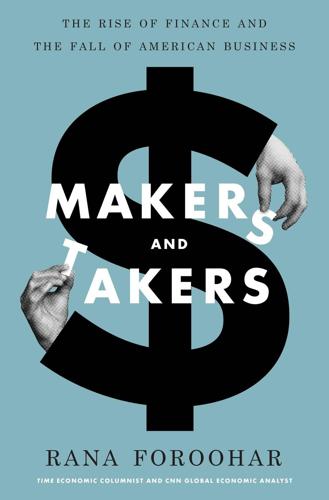
Makers and Takers: The Rise of Finance and the Fall of American Business
by
Rana Foroohar
Published 16 May 2016
Bureau of Labor, “Table 2: Retirement Benefits: Access, Participation, and Take-up Rates, State and Local Government Workers,” National Compensation Survey, March 2015. 32. Chris Christof, “Detroit Pension Cuts from Bankruptcy Prompt Cries of Betrayal,” Bloomberg, February 5, 2015. 33. Wallace C. Turbeville, “The Detroit Bankruptcy,” Demos, November 2013. 34. Wallace C. Turbeville, “Detroit Moves to the Next Phase,” Demos, November 7, 2014. 35. Turbeville, “The Detroit Bankruptcy.” 36. Rana Foroohar, “Detroit Turns Up,” Time, November 13, 2014; author interviews with Turbeville; Turbeville, “The Detroit Bankruptcy.” 37. Fix LA Coalition, “No Small Fees: LA Spends More on Wall Street than Our Streets,” March 25, 2014. 38.
…
Yet the stories of firemen who retire with million-dollar pensions are mostly myths that don’t capture the reality of the situation. The truth is that in many cases, it isn’t the pension load itself that is bankrupting governments and threatening entire regional economies, but the way in which local and state officials were fleeced by Wall Street during times of economic hardship. Consider the story of Detroit, the biggest municipal bankruptcy in American history, and the high-profile pensions fight at the heart of it. At its peak in 1950, Motown’s population was more than double the 700,000 people living in the city today. Detroit’s long-term decline was about many things, including civic mismanagement, political corruption, and systemic labor issues.
…
“The people [meaning pensioners] tried to get a seat at the table, but the emergency manager had a monopoly on the information [on city finances] and for the first four months of the process his was the only story available.”34 That, says Turbeville, along with what he believes were dubiously calculated numbers (crunched by emergency manager Kevin Orr’s team) that overestimated pension liabilities, resulted in a widespread belief that oversize pensions had caused Detroit’s demise. In fact, he says, it was the financiers who cut the dubious bond deals with the city in the first place that put Detroit into bankruptcy. That Wall Street debt was “the biggest contributing factor to the increase in Detroit’s legacy expenses,” explains Turbeville, who wrote an influential report in 2013 outlining the role that finance had played in Detroit’s demise.35 The long and short of it was that the people negotiating the debt settlement on behalf of the city were completely outsmarted and outflanked by financiers, who cut deals for millions of dollars of extremely long-term interest rate swaps that were subject to immediate termination if the city’s credit deteriorated, which of course it quickly did.

The Origins of the Urban Crisis
by
Sugrue, Thomas J.
. (© Detroit News) 8.2 Republican Mayor Albert Cobo inaugurated for his third term, January 1954 (© Detroit News) 8.3 Thomas Poindexter and members of the Greater Detroit Home Owners’ Association present Home Owners’ Rights Ordinance petitions to the city clerk, June 1964 (© Detroit News) 9.1 Handbill calling an emergency meeting to protest the purchase of a home by African Americans in the Courville area of Detroit’s Northeast Side, 1950 (courtesy of the Archives of Labor and Urban Affairs) 9.2 1920s-era bungalow on Tuller Street in the De Witt–Clinton neighborhood in the Wyoming Corridor (author’s photograph) 10.1 Looting on Twelfth Street on the first day of the Detroit uprising of 1967 (© Detroit News) Maps 1.1 Detroit, 1940 2.1 Detroit’s Black Neighborhoods, 1940 7.1 (a) Black Population in Detroit, 1940 7.1 (b) Black Population in Detroit, 1950 7.1 (c) Black Population in Detroit, 1960 7.1 (d) Black Population in Detroit, 1970 7.2 (a) Detroit’s Black Population by Median Income, 1950 7.2 (b) Detroit’s Black Population by Median Income, 1960 7.2 (c) Detroit’s Black Population by Median Income, 1970 9.1 Defended and Undefended Neighborhoods Tables 1.1 Detroit’s Population, 1910–1970 4.1 Black Workers in Detroit-Area Automobile Plants, 1960 4.2 Black Workers in Selected Detroit-Area Steel Plants, 1965 4.3 Black Enrollment in Apprenticeship Programs in Detroit, 1957–1966 5.1 Automation-Related Job Loss at Detroit-Area Ford Plants, 1951–1953 5.2 Decline in Manufacturing Employment in Detroit, 1947–1977 5.3 Percentage of Men between Ages 15 and 29 Not in Labor Force, Detroit, 1960 5.4 Building Permits Issued for Factories and Shops, Detroit, 1951–1963 5.5 Joblessness in Detroit, 1950–1980 7.1 Black Household Income in Census Tracts with More than 500 Blacks, Detroit, 1950 and 1960 9.1 Housing and Employment Characteristics, Defended and Undefended Neighborhoods, Detroit, 1940 and 1950 10.1 High-Poverty Tracts in Detroit, 1970 and 1980 10.2 Joblessness in Detroit’s High-Poverty Areas, 1970 and 1980 B.1 Black Male Occupational Distribution in Detroit, 1940–1970 B.2 Black Female Occupational Distribution in Detroit, 1940–1970 B.3 Index of Relative Concentration of Black Males in Detroit by Occupation, 1940–1970 B.4 Index of Relative Concentration of Black Females in Detroit by Occupation, 1940–1970 P.1 In the years leading up to Detroit’s bankruptcy, the city’s civic infrastructure collapsed because of inadequate city, state, and federal funding. The Detroit public Library’s once grand Mark Twain branch was shuttered for almost fifteen years, its roof deteriorating and its shelves collapsing, before it was bulldozed in 2011. The library system did not have the funds to repair it. Preface to the Princeton Classics Edition ON JULY 17, 2013, the city of Detroit filed for bankruptcy in federal court. It was a catastrophe long in coming, the result of decades of disinvestment, depopulation, political marginalization, and financial mismanagement from the City-County Building to Lansing to Wall Street.
…
Scavengers descend on newly abandoned houses within days, removing plumbing, wiring, and anything else that can be resold.5 Detroit’s bankruptcy is the grim epilogue to the story that I tell in The Origins of the Urban Crisis. But the conventional wisdom about Detroit seldom takes into account the long historical process that reshaped the city. Many observers, particularly on the right, blame unions for keeping wages and pensions high; point their fingers at Detroit’s mayors, particularly Coleman Young and Kwame Kilpatrick, for corruption and misrule; or criticize the Democratic Party and liberals for failing to implement austere budgets. Columnist George Will wrote that Detroit’s bankruptcy poses “worrisome questions about the viability of democracy in jurisdictions where big government and its unionized employees collaborate in pillaging taxpayers.”6 To understand Detroit’s troubled fiscal situation, however, requires a long-term view.
…
And its aging abandoned properties are prone to accidental fire and arson. Detroit averaged 90,000 fires in 2008, twice the number of New York City, even though the latter is eleven times more populous. But the city reduced the ranks of firefighters and closed firehouses to save money. The police department was understaffed and underfunded. The month that Detroit declared bankruptcy, local newspapers reported that the Detroit Police Department took an average of fifty-eight minutes to respond to emergency calls.12 Public education also suffered badly. Beginning in the 1990s, and escalating because of state and federal legislation, the Detroit Public Schools began to fund new, experimental charter schools, based on the unproven assumption that privately-run (but publicly funded) education would improve classroom outcomes.
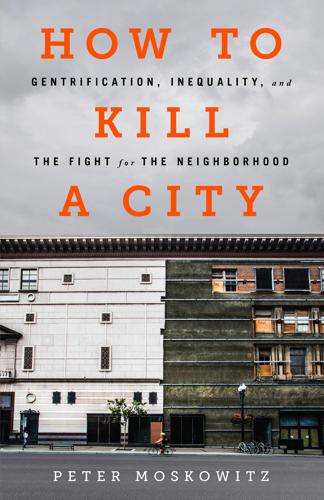
How to Kill a City: The Real Story of Gentrification
by
Peter Moskowitz
Published 7 Mar 2017
It seems that in their desperation to find something, anything, that will get their cities going again, city leaders have deemphasized all the risks and potentially lackluster results inherent in the gentrification-as-renewal strategy and instead embraced a strategy of “please just come.” Like Detroit’s former economic development czar said: “Bring on more gentrification. I’m sorry, but I mean, bring it on.” In the years preceding Detroit’s official bankruptcy, a confluence of neoliberal policy doctrine passed down from the leaders of successfully gentrified cities such as New York and prophets like Richard Florida, along with capital from people such as Dan Gilbert who were finally willing to take a risk on Detroit (and take advantage of its rock-bottom real estate prices), set the city up for a radical refocusing.
…
As Tonya Phillips, a black Detroiter and the executive director of Southwest Detroit Community Justice Center, put it to me, the new Detroit is nice; it’s just not built for her. While nonprofits and corporations are the main funders of Detroit’s new economic segregation, the government at all levels has placed its thumb on the 7.2’s side of the scale. Just weeks after Detroit filed for bankruptcy—a process that would see city workers’ pensions cut and a variety of city services reduced—Dan Gilbert traveled to the White House and convinced President Barack Obama to spend $300 million on Detroit, including $35 million for the M-1, and $150 million on blight removal, knocking down unoccupied houses throughout the city.
…
Before its brush with bankruptcy, New York City represented the welfare state. Beame and Ravitch made it clear those days were over. Today, the days when the city teetered on the brink of bankruptcy are remembered as an example of city leaders coming together to save a city from itself. Ravitch was even brought in to help Detroit with its bankruptcy in 2014. But the transition in New York was much bumpier at the time. Large protests were held all across the city. Unions got together to threaten a general strike. Garbage was thrown in the street to protest sanitation cutbacks. People occupied firehouses to draw attention to cuts, and started petitions to prevent college campuses from shutting down.
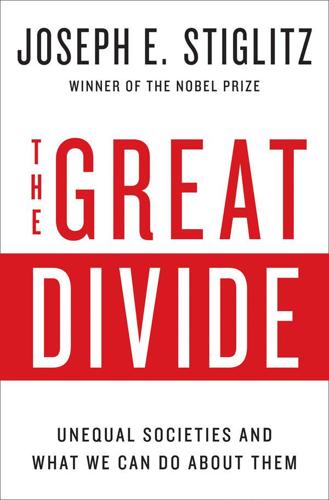
The Great Divide: Unequal Societies and What We Can Do About Them
by
Joseph E. Stiglitz
Published 15 Mar 2015
King Shaped My Work in Economics The Myth of America’s Golden Age Part III DIMENSIONS OF INEQUALITY Equal Opportunity, Our National Myth Student Debt and the Crushing of the American Dream Justice for Some The One Housing Solution Left: Mass Mortgage Refinancing Inequality and the American Child Ebola and Inequality Part IV CAUSES OF AMERICA’S GROWING INEQUALITY America’s Socialism for the Rich A Tax System Stacked against the 99 Percent Globalization Isn’t Just about Profits. It’s about Taxes Too. Fallacies of Romney’s Logic Part V CONSEQUENCES OF INEQUALITY The Wrong Lesson from Detroit’s Bankruptcy In No One We Trust Part VI POLICY How Policy Has Contributed to the Great Economic Divide Why Janet Yellen, Not Larry Summers, Should Lead the Fed The Insanity of Our Food Policy On the Wrong Side of Globalization The Free-Trade Charade How Intellectual Property Reinforces Inequality India’s Patently Wise Decision Eliminating Extreme Inequality: A Sustainable Development Goal, 2015–2030 The Postcrisis Crises Inequality Is Not Inevitable Part VII REGIONAL PERSPECTIVES The Mauritius Miracle Singapore’s Lessons for an Unequal America Japan Should Be Alert Japan Is a Model, Not a Cautionary Tale China’s RoadMap Reforming China’s State–Market Balance Medellín: A Light unto Cities American Delusions Down Under Scottish Independence Spain’s Depression Part VIII PUTTING AMERICA BACK TO WORK How to Put America Back to Work Inequality Is Holding Back the Recovery The Book of Jobs Scarcity in an Age of Plenty Turn Left for Growth The Innovation Enigma AFTERWORD Q&A: Joseph Stiglitz on the Fallacy That the Top 1 Percent Drives Innovation, and Why the Reagan Administration Was America’s Inequality Turning Point CREDITS INTRODUCTION NO ONE TODAY CAN DENY THAT THERE IS A GREAT DIVIDE in America, separating the very richest—sometimes described as the 1 percent—and the rest.
…
As I point out in “A Tax System Stacked against the 99 Percent,” a tax system such as ours, based largely on voluntary compliance, works only if there is a belief that the system is fair—but it is now evident to all that ours is not, that those at the top get a far better deal than those in the middle. The two articles reprinted here take up two consequences of inequality that have been given insufficient attention. The first focuses on what’s happening to our inner cities, in which so many of the country’s poor live. Detroit’s bankruptcy is emblematic. Like so many American families, it was hurt by following the advice of the exploitive financial sector, buying risky derivatives, which Warren Buffett referred to as financial weapons of mass destruction. In the case of Detroit, they did explode. As in so many other instances, when troubles emerged, the financial sector demanded to be paid back first—putting the welfare of ordinary citizens, including workers with contracts promising them retirement benefits, in the backseat.
…
Stiglitz, “Estimating the Costs of War: Methodological Issues, with Applications to Iraq and Afghanistan,” in Oxford Handbook of the Economics of Peace and Conflict, ed. Michelle R. Garfinkel and Stergios Skaperdas (New York: Oxford University Press, 2012), pp. 275–317; and Witness testimony to the House Committee on Veterans’ Affairs, September 30, 2010. THE WRONG LESSON FROM DETROIT’S BANKRUPTCY* WHEN I WAS GROWING UP IN GARY, INDIANA, NEARLY A quarter of American workers were employed in the manufacturing sector. There were plenty of jobs at the time that paid well enough for a single breadwinner, working one job, to fulfill the American dream for his family of four. He could earn a living on the sweat of his brow, afford to send his children to college, and even see them rise to the professional class.
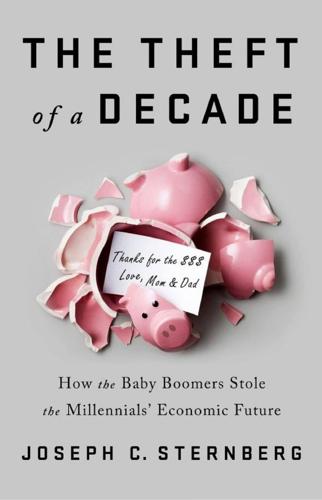
The Theft of a Decade: How the Baby Boomers Stole the Millennials' Economic Future
by
Joseph C. Sternberg
Published 13 May 2019
OECD, “Revenue Statistics: Comparative Tables,” OECD Tax Statistics (database), 2018, doi.org/10.1787/data-00262-en. 45. Keith Brainard and Alex Brown, “Significant Reforms to State Retirement Systems,” National Association of State Retirement Administrators Spotlight brief, June 2016. 46. Susan Tompor, “Even 5 Years Later, Retirees Still Feel the Effects of Detroit’s Bankruptcy,” Detroit Free Press, July 18, 2018. 47. Catherine Candisky, “Ohio Public Employees Pension System Oks Benefit Cuts,” Columbus (OH) Dispatch, October 19, 2017. 48. Catherine Candisky, “Legislation to Cut OPERS Benefits Dies,” Columbus (OH) Dispatch, March 23, 2018. CHAPTER 6: THEIR PRESENT, OUR FUTURE 1.
…
Affordable Care Act and, 68 as candidate, 153 financial crisis and, 129, 131, 132, 162, 164 fixed investment, 57 growth rate/output per hour, 57–58 housing and, 58, 123 interest rates and, 57 Medicare Part D and, 157 presidency overview, 57–58 taxes and, 152–153 wars/deficit-spending, 152 capital productivity definition, 48n car industry (US) decline (starting 1980s), 51 golden age (1950s/1960s), 51 TARP and, 130n Carter, Jimmy, 20 cashiers jobs and machines, 34n Cass, Oren, 58 China Millennials problems, 179 one-child policy/effects, 179 Chrysler, 130n Cisneros, Henry G., 123 Civil War economy/debt, 146–147, 148 civilian employment, 150, 150n Clark, Yvette, 219 Clinton, Bill as Boomer, 20, 122 computer/information technology and, 56–57, 235 economy and, 24, 54–57, 235 Family and Medical Leave Act, 55 housing and, 123 military budget and, 151 regulations and, 55 “Reinventing Government,” 56 sex scandals/impeachment and, 224–225 taxes and, 55, 152 welfare reform and, 164 Clinton, Hillary, 215, 219 coffee/avocado controversy, 1–3 College Scorecard, 93–94, 98 Community Living Assistance and Support (CLASS) program, 169 Competitive Enterprise Institute think tank, 229 computer/information technology Clinton and, 56–57, 235 investment/consequences, 56–57, 235 Congressional Budget Office Affordable Care Act, 168 Social Security, 173 consumption 1990s and, 54, 57 Boomers and, 50 investment relationship, 50 US becoming consumption economy, 58 consumption tax consequences, 173–174 Germany and, 196 Japan, 206 Countryside Financial, 129 Cowen, Tyler, 41–42 creative class, 41 Crowley, Joseph, 211 Cuomo, Andrew, 123 “Dead Men Ruling” phrase, 156 debt of Americans (by 1990), 54 before 1930s, 146–147 budget estimates/fudging, 152–153 financial crisis and, 161–165, 162n future generations and, 150 government civilian workers/benefits, 150, 150n Great Depression/New Deal and, 148–149 history overview, 146–149 measuring debt, 162n military and, 151 mortgage/housing debt, 123–127, 125n Progressive philosophy beginnings and, 148, 149 statistics on, 146 tax policies and, 152–153 wars and, 146–147, 148, 152, 152n See also deficit spending (government); education debt/Millennials; housing/financial crisis deficit spending (government), 97, 206 deflation, 234, 234n Deloitte Consulting, 104 Department of Housing and Urban Development (HUD), 123 Detroit bankruptcy/pension cuts, 175 DeVos, Betsy, 230 Dodd-Frank Wall Street Reform and Consumer Protection Act, 139–140 Dorn, David, 35–36 dot-com stock bubble burst (2000), 57 Dow Jones Industrial Average, 10 downsizing description/beginnings (1970s), 47–48 risk to employers, 37 Economic Policy Institute, 68 economy (US) description (1970s), 47–48 description/status, 16 economic crisis intervals, 6–7, 7n high skilled/polarization, 65 transformation (overview), 14, 15 See also specific components; specific times economy (US) before 2007-2008 crisis Boomers and, 46 overview, 45–46 education/Millennials after finding work, 31 alternatives to college education, 98–99 Atlantic magazine analysis of choice of college major, 92–93 graduating vs. learning, 90, 92, 92n importance of college education and, 87–89, 95–96, 106–107 information for making decisions and, 93–94 as investment, 89–92, 95 National Center for Education Statistics data analysis, 92–93 timing and, 13 education debt/Millennials Affordable Care Act and, 100 Boomer education and, 87, 88, 96–97 Boomer mortgages vs., 86 Boomer parents and, 88 credit ratings and, 94 degree inequalities and, 85, 91–93 description/overview, 17, 22–23, 83–103 for-profit colleges and, 98 grad school and, 89 grants and, 97, 99, 100 home ownership and, 94–95 household income and, 92–93 importance of college education and, 87–89, 95–96, 106–107 income-based pay plan and, 100–101 number of people going to college and, 87 parental/Boomer debt and, 84 private loans and, 99–100 racial inequality and, 96 reality of, 86 statistics, 22–23, 84–86, 87–89, 90–92, 93n, 94, 96–97, 99 subsidized loans and, 97, 98 taxes and, 97–98, 101, 101n Trump and, 230 tuition increases and, 87–88 warnings and, 102–103 emergency-lending facility use, 78 entitlements for elderly assumptions on growth/revenue and, 153 benefit cuts and, 175–176 demographics and, 156–157 expansion, 146 problems/Millennials and, 146, 159–160, 161, 233 taxes and, 157, 160, 174 Trump and, 231 “trust funds” and, 160 See also Medicare; Social Security euro currency, 180 Europe (Continental) generational problems borrowing and, 180 euro currency, 180 European Union/mobility and, 186 eurozone, 180 financial crisis and, 179–181 Europe (Continental) generational problems/unemployment economic growth and, 181–182 education and, 181 Millennials as shock absorbers, 182 minimum wages and, 183–184 NEET and, 181 older worker protection, 184–185 small-/medium-sized companies and, 182–183 taxes/tax wedge and, 183 temporary work, 184–185 youth unemployment/reasons and, 180–186 Fair Labor Standards Act (1938), 67–68 Family and Medical Leave Act, 55 Fannie Mae creation, 120 first-time buying and, 135 importance of, 11 less secure mortgages and, 122–123, 124–125 receivership, 125n, 129 role, 120, 122 Federal Deposit Insurance Corporation, 11 Federal Housing Agency (FHA), 120, 131, 135 Federal Insurance Contribution Act, 155 Federal Open Markets Committee, 133 Federal Register, 229 Federal Reserve financial crisis/Great Recession and, 60–61, 63–64 interest rates and, 18, 19, 124 investment and, 61–62 mortgage lending and, 61–62 “quantitative easing” and, 18–19, 60 Trump and, 19, 231–232 under Greenspan, 55, 124 FHA (Federal Housing Agency), 120, 131, 135 FICO, 94 Fidelity Brokerage Services savings survey, 77, 81 financial crisis/Great Recession bailouts and, 59 bank failures, 10–11 bankruptcies, 11 Boomers and, 60, 110–111 comparison to other economic crises, 59 description overview, 59–60 Federal Reserve and, 60–61, 63–64 home equity disappearance and, 110–111 job losses distribution, 32–37 “jobless recovery,” 35, 69 Millennials (overview) and, 9–14, 238 official end, 11 “redistribution recession,” 165 “shovel-ready” projects, 163, 163n social programs/benefits and, 163–166 stock market, 10 tax-cuts and, 163 See also housing/financial crisis Financial Crisis Inquiry Commission (FCIC), 122n fixed investment, 49, 51, 53, 56, 57, 60, 127 Florida, Richard, 41 401(k) plans, 80 France bailouts and, 180 minimum wage, 184 Freddie Mac first-time buying and, 135 importance of, 11 less secure mortgages and, 122–123, 124–125 receivership, 125n, 129 role, 122 free market politicians and, 18 See also specific components; specific individuals Friedman, Milton, 133 Friedman, Thomas, 41 Gates, Bill, 91 GDP (gross domestic product) financial crisis/recovery and, 11–12, 13 Millennials and, 220–221 Geithner, Tim, 129 General Motors, 130n “Generation X” description, 6n, 8 heirs and, 104 housing/financial crisis and, 10, 111, 131, 134, 135 retirement finances and, 80, 81 “Generation Y,” 6 generational accounting, 171–172 generational problems/other countries background, 177–179 lessons from, 177, 186–187, 200–201 union legal power and, 186 See also specific countries generational unfairness overview, 170–176 See also specific components generations birth cohort vs., 7 diversity, 7 See also specific generations Generations: The History of America’s Future, 1584-2069 (Strauss and Howe), 6–7 Germany bailouts and, 180 financial crisis, 180 migrants, 199 military spending and, 198n taxes and, 196–198 traits of people, 198 Germany/Millennials apprenticeship system, 181, 233 “balanced budgets” and, 195–196, 198–201 falling birthrates effects, 199 minimum wage and, 184 pension systems/retirement age and, 199, 200 welfare state/entitlements, 195, 196, 198–200 GI Bill, 120 gig economy Boomers and, 71 description, 69–72, 70n middleman and, 70, 140 Millennials and, 71, 234 technology and, 69–70 Ginnie Mae, 133 Gokhale, Jagadeesh, 171–172 Gore, Al “lockbox” and, 153–154, 161n Saturday Night Live and, 153–154 Great Depression, 10, 14, 49, 83, 119, 148, 163n, 238 Great Recession.
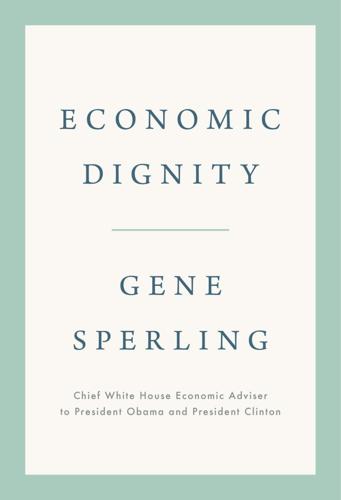
Economic Dignity
by
Gene Sperling
Published 14 Sep 2020
Georgia, 57–58 behavioral therapy, 211–12 Belgium, unemployment benefits, 131–32 “benefit corporation,” 120 Benitez, Lucas, 256 Bentele, Keith, 267 bereavement leave, 36–37, 233 Berlin, Isaiah, 16 Bernanke, Ben, 52 Bernstein, Jared, 191, 267 Biden, Jill, 214 Biden, Joe, 15, 163 Detroit bankruptcy, federal response, 138 Bidwell, Matthew, 233 Bill of Rights, 16–17 B Lab, 120 Blake, Robert, 128 Blinder, Alan, 128 blue sky research, 99 Boeing, 249–50 Bogenschneider, Bret, 150 Bolden, Dorothy, 72, 73–74, 257 Booker, Cory, 15, 163 Boushey, Heather, 8 Bowie, Norman, 224 Brandeis, Louis, 115 Brennan, William J., Jr., 17 Brooks, Arthur C., 163, 164–65, 170, 171 Brown, Sherrod, 15, 163 Browning, Elizabeth Barrett, 97 Brown v.
…
See also Dignity of Work Conservatives government’s responsibility, 97, 98, 99, 103 health care policy and, 99–101, 166–67 laissez-faire and free markets, 20–22, 106–7, 122 punitive model and, 90–94 consumer electronics, 139–40 Consumer Financial Protection Bureau (CFPB), 85 consumers and meaningful work, 236–39 contract workers, 9–10, 63–64, 230–33, 251–52 economic dignity net for, 191–94 Convergys Corporation, 236 Cooke, Sam, 33 Corinthian Colleges, 114 corporate purpose and stakeholders, 118–22 corporate taxation, xv, 123–25 cost-benefit analysis, 134–36 Costco, 122 Covert, Bryce, 36 Craigslist, 120 credit scores, 52, 53, 84 criminal justice system, 53–59, 94, 96, 288 criminalization of poverty, 18, 48–50, 56–59 fines and fees, 56–59 in-prison college programs and Pell Grant eligibility, 54, 55–56 maintaining connections with non-incarcerated loved ones, 54 occupational licensing restrictions, 55 criminal records employment and job applications, 54–55, 95, 214–15, 221 housing and, 56, 58–59 record-clearing remedies, 55–56, 59 Crisis of the Middle-Class Constitution, The (Sitaraman), 45–46 Cruz, Ingrid, 262–63 Cummings, Elijah, 224 CUNY Accelerated Study in Associate Programs (ASAP), 210, 276 Cuomo, Mario, xiv Curry, Stephen, 109–10 Dahl, Robert, 238–39 Danforth, John, 101 Darity, William, Jr., 104 Davis, Jefferson, 293 death spiral (insurance), 100 Deaton, Angus, 60 debt prisons, 48–49, 56–59 Declaration of Independence, 44 DeFazio, Peter, 125 Defense Advanced Research Projects Agency (DARPA), 99, 150 Defense of Marriage Act, 18 deficit spending, xv, 186, 188 Delaney, John, 34–35 Delano grape strike, 76, 237–38, 255–56 DeLauro, Rosa, 179 Deming, David, 280–81 Democracy in America (Tocqueville), 49–50 democratic socialism, 103 Denmark, 294 unemployment benefits, 50, 131–32 Desmond, Matthew, 82–83, 175 Detroit bankruptcy, federal response, 138 developmental disabilities. See intellectual or developmental disabilities development subsidies, 125–26 DeVos, Betsy, 114 dignity net. See economic dignity net dignity of work, 153–62 compact of contribution, 154–62 double-dignity jobs, 205–22 economic dignity net, 190–204 economic dignity wage, 172–89 empty promise of conservatives.
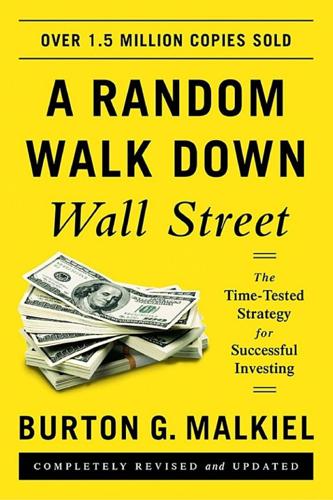
A Random Walk Down Wall Street: The Time-Tested Strategy for Successful Investing (Eleventh Edition)
by
Burton G. Malkiel
Published 5 Jan 2015
Discounts do vary from week to week. There are also closed-end funds that hold tax-exempt municipal bonds. These funds have tended to sell at discounts at times when investors have been concerned about the creditworthiness of municipal securities. Worries about the indebtedness of Puerto Rico and the Detroit bankruptcy led to lower prices and higher yields for all state and local government securities. Those concerns also led to lower prices and bigger discounts for closed-end municipal bond funds. In 2014, many of these funds sold at discounts of 10 percent or more, and they provided investors with yields between 6 and 7 percent.
…
Freud (Jackson and Haas), 114 Business 2.0, 91 BusinessWeek, 139 Butler, Samuel, 190 buy-and-hold strategy, 252–53, 255 defined, 140 minimizing taxes through, 388–92 technical strategies compared to, 140, 143, 158 buy vs. sell recommendations, ratio of, 171–72 California, University of, 172, 197 call options, 39 capital-asset pricing model (CAPM), 209–28, 268–69 logic of, 213–19 proof of, 215–18 rate of return in, 210–19 reduced to formula, 215–18 risk and return according to, 213–16 search for alternatives to, 221–25 see also beta capital gains, 195, 312, 390 capital gains taxes, 158, 246, 273, 331, 382–83 Capital Guardian Trust, 227 CAPM, see capital-asset pricing model Carr, Fred, 66 Carroll, Lewis, 56 Carswell, John, 42 Case-Shiller inflation-adjusted home-price index, 101–2 cash-burn rate, at Internet companies, 80 cash reserve, 294 castle-in-the-air theory, 31, 33–35, 37–78, 189, 408 institutional investors and, 63, 67 newspaper-contest analogy for, 34, 250 technical analysis and, 110, 132–33, 134 Census Bureau, U.S., 371 certificates of deposit (CDs), 298–99, 353, 363 Chancellor, Edward, 91 chartists, 110–15, 235 computers as aid to, 117–18, 136, 144–45 defined, 110 market as viewed by, 110–11, 136–37 reasons for survival of, 154 sexual overtones of, 114–15 as technicians, 117–18 as traders, 114–15, 116–17 Chase Bank, 50–51 Cheruco, 94 Chicago, University of, 197 Chrysler Credit Corporation, 70 Cisco Systems, 81, 83, 124 Citigroup, 264, 272, 280 Cleaning Up and Down, But Not Out (Minkow), 75 closed-end funds, 401–7 defined, 402 regular, 401–7 selection of, 403 selling at discounts, 54, 401–5 CNBC, 89, 92 Cobleigh, Ira, 146 Coca-Cola, 387 coin tossings, 138–39 mutual-fund performance and, 178–79 stock charts produced from, 138–39 collectibles, as investments, 322–25, 338 college, saving for, 304–5 College Retirement Equity Fund, 384 commodities, as investments, 204, 310, 325 common stocks, 26, 311, 313, 322, 350, 351, 364 discount buying of, 402 Do-It-Yourself Step in selection of, 379, 393–98 firm-foundation theory and, 30–33 future of, 342–48 as inflation hedge, 224, 333–34, 340 Malkiel Step in selection of, 380, 401–5 No-Brainer Step in selection of, 379, 380–82 rate of return on, 194–96, 307, 329–37 risk of, 195–96, 307, 309, 341, 342, 352, 399 Substitute Player Step in selection of, 379, 398–400 Community Bible Church, 74, 75 concept stocks: birth of, 66 boom and bust of, 36, 65–68 fraud in, 68 poor performance of, 68 condominiums, 314 confidence intervals, 233–35 conglomerate crazes, 60–66 decline of, 64–66 language invented in, 63–64 conglomerates: advantages of, 60–61 in production of earnings growth, 60–64 Congress, U.S., 101, 314 consumer price index (CPI), 293, 319 “contrarian” strategy, 267 control, illusion of, 235–38 “cookie jar” reserves, 95 Coolidge, Calvin, 48 Cooper, M., 82 Cornell University, 146, 172 Corning, 83 correlation coefficients, 200, 204–6 Cosmopolitan, 153 counterparties, 99 covariance: defined, 198n negative, 200 Cragg, John, 122, 165 Cramer, Jim, 173 credit booms, 104 credit-default swaps, 99–100 Credit Suisse First Boston, 86 CRSP LargeCap Value Index, 264, 385 cyclically adjusted price-earnings (CAPE) multiples, 347, 387 Dalbar Associates, 242 Dartmouth, 172 day traders, Internet bubble aided by, 93, 253 decision making, 230 herd mentality in, 239–43 deconglomeration, 65 Deepwater Horizon, 173 defensive investments, see beta, low deferred variable annuity, 297 demand-pull inflation, 337 derivatives, 25 see also stock options Detroit, Mich., bankruptcy of, 404 Diamond Foods, 167 diamonds, as investment, 323 Dickens, Charles, 379 Dickson, Joel, 390 Digiscents, 84 Dimensional Fund Advisors (DFA), 270–71, 272, 273, 277 Dimensional Fund Advisors large-cap value fund (DFLVX), 270–71, 278 Dimitrov, D., 82 discount brokerage firms, Internet bubble aided by, 91–92 discounted value, see present value discounting, 325, 402–3 of deferred income, 125n defined, 31–32 disposition effect, 246 diversification of portfolios, 197–204, 209–10, 261–62, 266, 269, 288, 309, 310, 322, 349–50, 397, 407–8 advantages of, 326–28, 352, 411 into emerging markets, 204–8, 387 index funds and, 261, 384 international, 201–8, 271, 310, 366, 386, 391, 403, 411 in practice, 201–8 in real estate, 314–15 risk reduction and, 261, 198–200 systematic risk and, 211–15 tilting (flavoring) and, 261–71, 274–76 total risk and, 211–13, 326–28 unsystematic risk and, 211–15 dividend payout, 31–33 expected, 123, 126–27, 130 stock valuation and, 123, 126 dividends, 31–32, 123, 195, 330–32, 336, 340, 361, 420 calculating length of time for doubling of, 120 taxes and, 312 Dodd, David L., 32–33, 184, 262 Doerr, John, 87 Do-It-Yourself Step, 379, 393–98 four stock selection rules in, 394–98 dollar-cost averaging, 350, 355–59 defined, 355 Doonesbury, 87 dot-com, in company names, 85 Dow Jones Industrial Average, 142, 149, 152 Down and Dirty Pictures, 86 Dow theory, 142–43 Dreyfus, Jack, 58 Dreyfus and Company, 58 Drugstore.com, 89 Dunlap, “Chainsaw Al,” 167 Dyansen Corporation, 70 EAFE index, 204 earnings, pro forma vs. actual, 167–68 earnings growth: compound, 119–20 conglomerate wave in, 60 expectations of, 54, 57, 121–23, 126–27, 160–63, 394, 395 inflation and, 340 long-term, 394 security analysts in prediction of, 160–63 see also growth stocks Eastern Buggy Whip Company, 120 Eastman Kodak, 68, 161 eBay, 85, 324 education, saving for, see “529” college saving accounts Efficient Market Hypothesis (EMH), 284–87 see also random-walk theory Einstein, Albert, 119, 292 electronics industry, 57–59, 165 electronic trading, 325 Elliot, R.
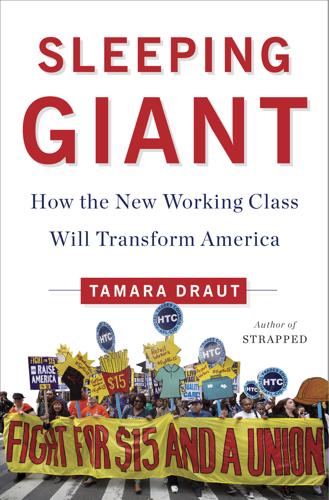
Sleeping Giant: How the New Working Class Will Transform America
by
Tamara Draut
Published 4 Apr 2016
—Adam Smith, The Wealth of Nations, 1776 Contents Cover Also by Tamara Draut Title Page Copyright Dedication Epigraph Introduction CHAPTER ONEThe Bargain-Basement Economy CHAPTER TWOThe New Indignity of Work CHAPTER THREEMeet the New Populists CHAPTER FOURThe Great Power Shift CHAPTER FIVEThe Legacy of Exclusion CHAPTER SIXThe Privilege of Visibility CHAPTER SEVENThe Sleeping Giant Stirs CHAPTER EIGHTA Better Deal The Blueprint for a Better Deal Acknowledgments Notes About the Author Introduction My father died a few short months after the city of Detroit declared bankruptcy. He was a steelworker, the epitome of the person you likely conjure up when you hear someone described as “working class.” White, male, hard hat and lunch pail, steel-toed boots, and a dark blue uniform he’d bring home at the end of every shift and promptly throw in the washing machine.
…
He was America’s hero, the brawny backbone of American prosperity and a broad middle class the likes of which the world had never seen. These were the men who soldered, heaved, and secured America’s industrial might in the world, and as a result earned the pride and respect of our nation. That working class is dead, Detroit’s bankruptcy a blunt symbol of its ultimate demise. But the working class is not dead. It’s just different. No longer shuttered away in a factory, today’s working class is interwoven into nearly every aspect of our lives. It’s the black woman in a caretaker’s smock wearing special comfort shoes and a name tag above her heart.
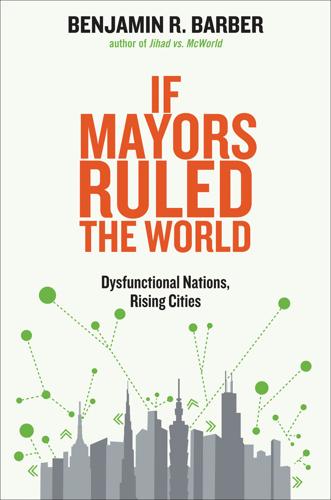
If Mayors Ruled the World: Dysfunctional Nations, Rising Cities
by
Benjamin R. Barber
Published 5 Nov 2013
In many places, cities are being effectively strangled fiscally by higher authorities responsible for taxing urban citizens and redistributing the income. In California, where Stockton is only the best known example, city after city is facing bankruptcy. In Michigan, twenty-one “emergency managers” have been assigned to “save” cities in distress, and cities as large as Detroit face bankruptcy, while others such as Pontiac (on its third outside manager) no longer possess a shred of financial or political self-administration, having seen their basic services carved up and severed from the city—farmed out to county and state administrative bodies.36 Even in Europe, states that have yielded some degree of their sovereign autonomy to common authority continue to dominate the European financial crisis, while cities—Europe’s most successful civic bodies—bear a preponderance of the brutal consequences of the crisis.
…
See Dikshit, Sheila Deliberative polling, 257, 308, 350, 390n28 Deliberative voting, 350, 390n28 Delphic Games, 293 Demes, 14, 156 Democracy, 12–14, 53–78; bottom-up, 21, 22, 336–359; and culture, 273, 280–283; and digital technology, 251–252; in new nation-states, 155; participation and power, 5, 74–78; as process, 53–54; remedy for ills of, 224–228; in urban vs. rural areas, 55–74 Density, 58, 219–220, 384n12 de Soto, Hernando, 228–229 Detroit: bankruptcy, 186, 321; business revival, 221, 223 Developed countries: segregation, 190; slums, 179–180, 187 Developing countries: segregation, 190–191; slums, 180, 188–189, 377n10 Dewey, John, 5–6, 281, 286 Dialectical view, 41–43 Diderot, Denis, 218–219 Digital Divide Network, 255, 263 Digital technology, 241–267; applications, 242–243; and big data, 245–246, 252, 258; and democracy, 251–252; and dissidence, 259; market privatization, 254; megacompanies, 254–256; monetization, 249, 253, 389n17; private ownership, 245; as “push” technology, 253, 257; smart uses, 259–262; and surveillance, 244–245, 256.

Money Changes Everything: How Finance Made Civilization Possible
by
William N. Goetzmann
Published 11 Apr 2016
See also shareholder democracy de Moivre, Abraham, 264–66, 270, 347 de Molay, Jacques, 209 Demosthenes: bank loan and, 84; dispute over mining lease and, 89–90; logical arguments of, 90–91; maritime trade dispute and, 77–78, 80; portrait of, 74; suing for his stolen inheritance, 85–86, 95 denarius, 129–31 Dent and Company, 425, 427, 429, 430 deposits: in Athenian banks, 84–85; in Roman banks, 112 Depreciation certificates, 394, 400 Depression. See Great Depression derivatives, financial, 276; on Law’s Mississippi Company shares, 357; pricing models for, 284; Regnault’s valuation of, 281 Detroit, bankruptcy of, 517 development: China’s Self-Strengthening Movement and, 430; imperialism associated with, 418–19; World Bank and, 459. See also economic growth De Witt, Johan, 255–57, 262, 266, 270 Dilmun, in Mesopotamian copper trade, 53–55, 58, 59, 64 Dimson, Elroy, 464 discovery. See exploration Disraeli, Benjamin, 420 diversification of investments: in ancient Near East, 58, 61, 64; in Athenian maritime trade, 79; with first British investment funds, 417; globalization of equity and, 403; by index funds, 508, 509–11; by investment trusts, 473–74; limited liability and, 119–20; Lowenfeld’s science of, 414–16, 453, 470; modern science of, 404; portfolio optimization models for, 504–8; Roman publican societies and, 123.

The Revenge of Analog: Real Things and Why They Matter
by
David Sax
Published 8 Nov 2016
Shinola was profiting off the city’s hardship, tugging at the heartstrings of Americans to help support poor Detroit, whose ruined, abandoned buildings had become a form of postindustrial pornography to those living elsewhere. Perhaps an even greater insult to Detroit was the notion that these made-in-Detroit goods were entirely unobtainable to most residents of the city Shinola was waving its $15,000 flag for. Shinola has done little to avoid this. Shortly after the City of Detroit declared bankruptcy, succumbing to crushing debts that had decimated city services to the point where its residents lived without water, fire engines were held together with duct tape, the famed Detroit Institute of Arts contemplated selling off its masterpieces, and numerous Detroiters actually froze to death in their homes, Shinola’s Twitter feed displayed the following message: “Bankruptcy, shmankruptcy.
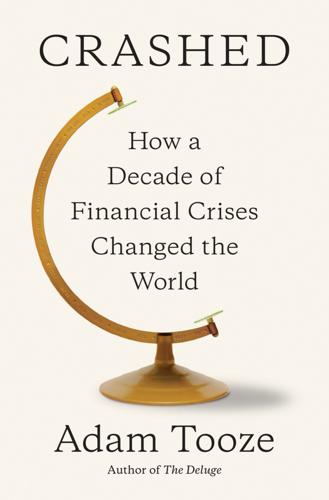
Crashed: How a Decade of Financial Crises Changed the World
by
Adam Tooze
Published 31 Jul 2018
Manning Thomas, “Saving Strong Neighborhoods from the Destruction of Mortgage Foreclosures: The Impact of Community-Based Efforts in Detroit, Michigan,” Housing Policy Debate (2017), 1–27. 4. C. MacDonald and J. Kurth, “Foreclosures Fuel Detroit Blight, Cost City $500 Million: Risky Loans Contribute to Swaths of Empty Homes, Lost Tax Revenue,” Detroit News, June 2015. 5. C. S. Chung, “Zombieland/The Detroit Bankruptcy: Why Debts Associated with Pensions, Benefits, and Municipal Securities Never Die and How They Are Killing Cities Like Detroit,” Fordham Urban Law Journal 41 (2014): 771–848. 6. J. Zeitz, “Born to Run and the Decline of the American Dream,” Atlantic, August 24, 2015. 7. S. Lemke, Inequality, Poverty and Precarity in Contemporary American Culture (New York: Palgrave, 2016). 8.

The Metropolitan Revolution: The Rise of Post-Urban America
by
Jon C. Teaford
Published 1 Jan 2006
In the fiscal year 1975/1976, Philadelphia recorded a $73 million deficit, and the projected budget gap for 1976/1977 was $100 million.46 In 1974 Buffalo’s finance commissioner seemed about ready to sacrifice his city’s self-government when he remarked, “Perhaps we should just take the charter and the keys, send them to Albany, and say ‘Okay, you solve it. We can’t do any more.’”47 The next year, local banks rescued Buffalo at the last minute, thus staving off a default on the city’s short-term debt. The state of Michigan helped Detroit avoid bankruptcy in the second half of the 1970s. In 1978, however, Cleveland defaulted on its short-term notes, reinforcing that city’s image as a deteriorating remnant of America’s industrial past. Perhaps reassured by discovering a community in worse financial shape than New York City, the New York Times published an article headlined “Cleveland Caught in Long Decline” and pronounced soberly that “Ohio’s largest city is chronically ill.”48 By the second half of the 1970s, this chronic illness seemed of epidemic proportions.
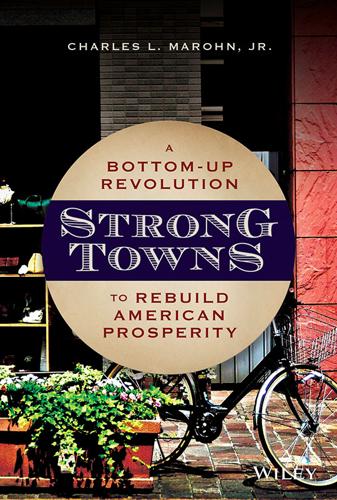
Strong Towns: A Bottom-Up Revolution to Rebuild American Prosperity
by
Charles L. Marohn, Jr.
Published 24 Sep 2019
So much so that, by the end of World War II, it was very clear to a victorious nation what needed to happen if we wanted to keep from sliding back into economic depression: We all needed to copy the success of Detroit. That is what we did. When you take a prosperous and stable city, spread it out at tremendous cost over an enormous area, denuding and bisecting the original fabric as part of the transition, then saddle it with decades of liabilities, you end up with Detroit. Like all bankruptcies, it happened slowly and then all at once. Detroit is not some strange anomaly. It’s just early. It’s just a couple of decades ahead of everyplace else. Notes 1 Disclosure: Jon and I would become good friends after this project. It was his idea to form a nonprofit named Strong Towns to explore the startling ideas we started to uncover in Pequot Lakes. 2 Jared Diamond, The World Until Yesterday: What We Can Learn from Traditional Societies (New York: Penguin Books, 2012). 3 http://www.who.int/bulletin/volumes/88/7/10-010710/en/. 4 http://www.euro.who.int/en/health-topics/noncommunicable-diseases/diabetes/data-and-statistics. 5 https://www.youtube.com/watch?

Connectography: Mapping the Future of Global Civilization
by
Parag Khanna
Published 18 Apr 2016

Where We Want to Live
by
Ryan Gravel
Published 2 Feb 2016
It was redefined. And its new physical, social, economic, and cultural conditions have made it into much more than a spectacle of decay. They have permitted unexpected innovation and opened the door to an emerging new identity—another model for the rest of the world. Today, despite Detroit’s historic bankruptcy and the cheap shots from the blogosphere, things are stabilizing. The city’s dirt-cheap real estate, weighty remaining architecture, and iconic spirit are attracting a new brand of innovators in the arts, in agriculture, and in business networks built around human relationships with corporate citizens and anchor institutions.
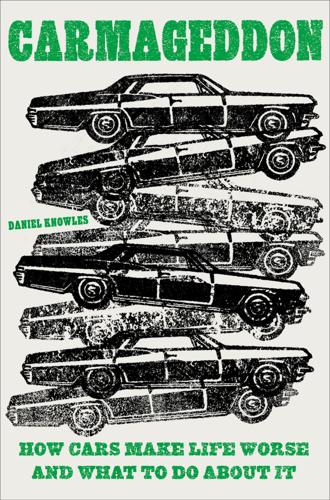
Carmageddon: How Cars Make Life Worse and What to Do About It
by
Daniel Knowles
Published 27 Mar 2023
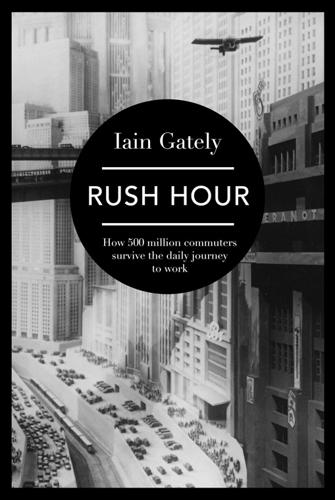
Rush Hour: How 500 Million Commuters Survive the Daily Journey to Work
by
Iain Gately
Published 6 Nov 2014
Moreover, new highways built to facilitate com-muting had broken the unity of the city. Over 2,800 buildings in the old core were removed to make room for the Edsel Ford Expressway, and the road became a barrier between previously interdependent districts. Indeed, problems created in the heyday of auto-commuting are still with us: in July 2013 Detroit filed for bankruptcy. By that point the city’s population had declined from a peak of 1,850,000 in 1950 to 701,000, and it had insufficient tax revenues to meet its liabilities. Both employers and workers had used their automobility to move elsewhere. From the driver’s point of view, the principal problem created by burgeoning car ownership in mid twentieth-century America was congestion.
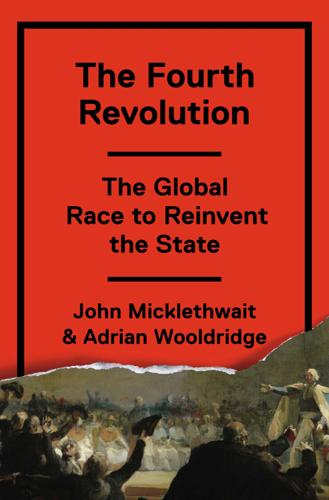
The Fourth Revolution: The Global Race to Reinvent the State
by
John Micklethwait
and
Adrian Wooldridge
Published 14 May 2014
AARP, 124 absolutism, 32, 43 academies, 212, 214 Adams, John, 249, 250, 251, 254, 261, 269–70 Adonis, Andrew, 131 affirmative action, 79, 88 Africa, Chinese businesses in, 152 African National Congress, 254 agriculture: in emerging world, 238 subsidies for, 185, 237–38 Agriculture Department, U.S., 108, 237–39 airports, privatization of, 235 Ai Weiwei, 34 Alton Locke (Kingsley), 58 American Federation of State, County and Municipal Employees, 114 American Medical Association, 204 American Revolution, 6–7, 44, 45, 46, 264 Amtrak, 235 Anderson, Chris, 191 Antholis, Bill, 218 Arab League, 253 Arab Spring, 144 Aravind Eye Care System, 203, 204 Archer Daniels Midland, 238 Argentina, economy of, 120 Army, U.S., 182 Arnold, Matthew, 58 Asia: aging population of, 165 economic crisis of 1997 in, 142–43 pensions in, 141–42 in sixteenth and seventeenth centuries, 34–36 Asquith, Herbert, 61 Australia: civil service in, 215 overlapping areas of government responsibility in, 108 “Austrian school,” 83 automobile industry, 189, 190, 191 Bagehot, Walter, 128 Balázs, Étienne, 40 Balcerowicz, Leszek, 96 ballot initiatives, 127 Bangalore, India, 201, 218 Bank of England, 43 Barboza, David, 162 Bartlett, Bruce, 121 Baruch, Bernard, 233 “basic minimum,” 87 Baumol, William, 19, 110, 178–79, 187, 222 Baumol’s disease, 19, 109–11, 174, 178–79, 183, 222 Becker, George, 84 Beijing, 34–35 Belgium, 228 Bell, Daniel, 157 Bentham, Jeremy, 49, 57, 85 Berggruen, Nicolas, 124, 129, 131, 159 Berlin, Isaiah, 48, 226, 228 Berlin Wall, 253 Berlusconi, Silvio, 12, 128, 196, 227 Bertelsmann Foundation, 143 Best Party, 261 Bevan, Aneurin, 75 Beveridge, William, 74, 75, 78, 90, 97, 245 Beveridge Report, 74 bike sharing, 216–17, 219 Bildt, Carl, 175 Bill of Rights, English (1689), 43 Bill of Rights, U.S., 226, 250 Bismarck, Otto von, 6, 7, 60, 174–75 Blair, Tony, 96, 194, 262 on small government, 95, 211–14 Bleak House (Dickens), 50 Bloom, Nick, 191 Bloomberg, Michael, 196–97, 217 Bloomberg Businessweek, 129–30 Boao Forum for Asia, 153 Bodin, Jean, 29 Boer War (1899–1902), 61 Böhlmark, Anders, 176 Bolsa Família, 206 Booth, Charles, 66 Boston, Mass., 210 Boston Consulting Group, 172 Boston Tea Party, 240 Bourbon Restoration (1814), 46 Bo Xilai, 154, 218 Brandeis, Louis, 263 Brazil, 13, 18, 96, 153 entitlement reform in, 17, 206 breakaway nations, 260 Bright, John, 56 British Airways, 94 British Gas, 94 British Medical Association, 114 British Rail, 213 British Telecom, 94, 234 Brown, George, 134 Brown, Gordon, 99, 130, 215 Brown, Jerry, 10, 91, 106, 119, 125, 219 fiscal reforms of, 118, 129–30 Brown, Pat, 105–6, 124–25 Buchanan, James, 84, 262 Bureau of Corporations, 72 Bureau of Land Management, 236 Bush, George H.W., 95 Bush, George W., 10, 98, 164, 177, 198, 255, 262 business sector: globalization and, 191, 193 innovation in, 194 productivity in, 18–19 reinvention of, 189–92 technology and, 191 Butler, R.A., 75 California, 105–32 ballot initiatives in, 127 Baumol’s disease and, 109–11 constitution of, 107 deficit in, 118–19 education in, 111 as exemplar of Western state failures, 106–7 fiscal reform in, 129–30 old and well-off as primary beneficiaries of public spending in, 122–23 outdated governmental system of, 107–8 pensions in, 113, 115, 119–20, 130 political polarization in, 124–25 population of, 108 prison system in, 112–13 proliferation of regulation in, 116 Proposition 13 in, 91, 92, 107 public contempt for government in, 106, 112 public-sector unions in, 112–15, 120 special interest groups in, 112–15 taxes in, 116, 129 unfunded liabilities in, 119, 129, 130 California Board of Barbering and Cosmetology, 116 California Correctional Peace Officers Association (CCPOA), 112–13 California Environmental Quality Act (1970), 117 California Public Policy Center, 119 California Teachers Association, 113 Cameron, David, 130–31, 158, 199, 215 Canada, 199 Capio, 171–72 capitalism, 50–54 democracy’s presumed link to, 261–62 inequality and, 262–63 state, see state capitalism as supposedly self-correcting, 70 Capitalism and Freedom (Friedman), 86 Cardoso, Fernando Henrique, 96 Carlino, Gerald, 218 Carlyle, Thomas, 44, 57 Carney, Mark, 215 Carswell, Douglas, 260 Carter, Jimmy, 198 Carville, James, 97 Castiglione, Baldassare, 33 Catholics, 38 Cato Institute, 238 Cavendish, William, 31, 40 Cavendish family, 31, 47 Cawley, James, 204 CCTV cameras, 182, 226 Center on Budget and Policy Priorities, 124 Central Party School, 150, 156 Central Provident Fund, 140 Centre for Policy Studies, 92 centrism, 95, 98 Chamberlain, Joseph, 66 Charles I, King of England, 31 Charles II, King of England, 32, 38, 42 Charlie and the Chocolate Factory (Dahl), 228 charter schools, 212, 214, 215 Chartists, 51, 58 checks and balances system, 226, 250, 255–56, 265 Chidambaram, Palaniappan, 96 Child, Josiah, 39 Childs, Marquis, 169 China, Imperial, 37 bureaucracy of, 37, 40–41 innovation disdained by, 41 in seventeenth century, 34–36 trade with West rejected by, 41 China, People’s Republic of: aging population of, 164, 183 Asian-state model in, 136–37, 145, 149, 152, 156 Communist ideology in, 63, 145 corruption in, 4, 18, 148, 149, 186 Cultural Revolution in, 156 economy of, 3, 146, 163 education in, 147, 148–49, 164 efficiency of government in, 146, 153, 159 elitism in, 161–62 governmental changeover in, 159 health care in, 164 health insurance in, 141, 156 India contrasted with, 146, 153 lack of public confidence in, 13 leadership training in, 105 local government in, 160–61, 217–18 long-term outlook of, 159 mandarin tradition of, 138, 156, 157 meritocracy in, 156–63, 164, 254 pensions in, 156, 183 Singapore as model for, 145 slowing of economic growth in, 164 social-service NGOs in, 158 state capitalism in, 64, 149–56, 234 state-owned enterprises (SOEs) in, 150–52, 154–55 urban population increase in, 149 U.S. contrasted with, 147, 153 Western democracy seen as inefficient by, 145 China Executive Leadership Academy in Pudong (CELAP), 1–5, 18, 145, 153, 156 China Mobile, 151 China Youth Daily, 148 Chongqing, China, 218 Christensen, Clayton, 203 chronic diseases, 183, 200, 204 Internet and, 209 Chua, Amy, 143 Churchill, Winston, 68, 75, 247 cities: population growth in, 149, 218 working relationships between, 218–19 Citizens United decision, 240 Civil War, English, 6, 31, 38, 43 Clark, Joseph, 77 class struggle, 62–63 Clinton, Bill, 10, 95, 96–97, 98, 142, 217 Clinton, Hillary, 162 Coase, Ronald, 84, 229 Cobbett, William, 49 Cobden, Richard, 56 Code for America, 216 Coggan, Philip, 263 Cohen, Jared, 210–11 Cohen, Leonard, 185 cold war, 76, 252 Colloquies on Society (Southey), 224–25 commerce, nation-state and, 33 Committee on Social Thought, 83 Common Sense (Paine), 44 Communist Party, Chinese, 63, 145, 153 elitism in, 161–62 as meritocracy, 156–57 Organization Department of, 151 Communists, communism, 7, 8, 63–64, 71, 77, 134, 137, 145, 225 successes of, 90–91, 252 compassion, 61 “compassionate conservatism,” 98 competitive advantage, 189 Condorcet, Nicolas de, 222 Confederation of Medical Associations in Asia and Oceania, 204 Congo, 22 Congress, U.S., 16, 100, 228 approval ratings of, 11 dysfunction in, 256 lobbies and, 238–40, 257 Congressional Budget Office, 15, 242 Congress Party, India, 162 Conservative Party, British (Tories), 11, 69, 75 conservatives, conservatism, 10 “compassionate,” 98 see also Right Constitution, U.S., 108, 109, 256 Fourteenth Amendment of, 120 Constitution of Liberty, The (Hayek), 92 consumer choice, 191 consumption taxes, 123–24 Corn Laws, 50, 238, 240 corruption, 185–86 crime, Western state and, 181–82 Crimean War, 65 Croly, Herbert, 71 Cromwell, Oliver, 32 Cromwell, Thomas, 6, 37 crony capitalism, 72, 112, 155, 234, 237–38, 246, 269 Cultural Revolution, 156 Czech Republic, 252 Darwin, Charles, 59 Das, Gurcharan, 13 Davies, Mervyn, 215 decentralization, 216–19 defense, spending on, 16 Defense Department, U.S., 20 deficits, deficit spending, 14, 100, 118–22, 177, 231–32, 241 unfunded liabilities and, 119, 232 democracy: in Asian-state model, 17 big government as threat to, 251, 264–69 as central tenet of Western state, 5, 8, 16–17, 22–23, 136, 141, 221 Founding Fathers and, 226, 250, 265 Fourth Revolution and, 249–70 globalization and, 262 imperfections of, 17, 127–28, 141, 143–44, 145, 226–27, 247–48, 251, 269 income inequality and, 263 in India, 136, 146 individual freedom as threatened by, 226, 250–51 nation-states and, 259, 262 presumed link to capitalism of, 261–62 as presumed universal aspiration, 261–62 as rooted in culture, 262 scarcity and, 247–48 self-interest and, 250, 260 short-term vs. long-term benefits in, 260–61, 264 special-interest groups and, 16–17, 111–15, 247, 251 strengths of, 263 twentieth-century triumph of, 252 twenty-first-century failures of, 252–61 uneven history of, 249–50 welfare state as threat to, 22, 142 Democracy in America (Tocqueville), 252 Democracy in Europe (Siedentop), 251 Democratic Party, U.S., 97, 240 spending curb approved by, 12 spending cuts opposed in, 100, 255 Democratic Review, 55 Deng Xiaoping, 142 Singapore as inspiration to, 145 Denmark, 22, 210 disability insurance in, 244 “flexicurity” system in, 173, 176 innovation in, 220 1980s financial crisis in, 176 reinvention of welfare state in, 173–74 Depression, Great, 69–70, 85 Detroit, Mich., 218–19 bankruptcy of, 14, 119 Detter, Dag, 236 Dicey, A.V., 57 Dickens, Charles, 50, 57–58 Dirksen, Everett, 192–93 disability-insurance reform, 244 Discovery Group, 211 discretionary spending, 195 diversity, 214–16 DNA databases, 182 Dodd-Frank Act (2010), 117, 239 Doncaster Prison, 214 Downey, Alan, 177 Drucker, Peter, 198 Dubai, 144, 217 Dukakis, Michael, 95 Dundase family, 49–50 East India Company, 36, 40, 47, 48, 50, 56, 150, 240 Eastman Kodak, 190–91 École Nationale d’Administration, 194 economic-freedom index, 174 Economist, 86, 97 Edison, Thomas, 179 education, 7, 9, 16, 48, 58, 197 charter schools in, 212, 214, 215 in China, 147, 148–49, 164 cost/outcome disparities in, 194–95 declining quality of, 111 diverse models for, 214–15 government domination of, 10 international rankings of, 19, 148, 206–7 preschool, 123 reform of, 58–59, 212 in Sweden, 171, 176–77 technology and, 179–80 voucher systems for, 171, 176–77, 220 in welfare state, 68, 69 Education Act (British, 1944), 75 Egypt, 155 failure of democracy in, 253, 262 Mubarak regime overthrown in, 144, 253 Eisenhower, Dwight, 77 elections, U.S., cost of, 257 electrocardiogram (ECG) machines, 205 elitism, 135, 136, 138–39 in Chinese Communist Party, 161–62 in U.S., 162 welfare state and, 77–78 Emanuel, Rahm, 216 emerging world: agriculture in, 238 as failing to grasp technological change, 18 innovation in, 17 lack of public confidence in, 13 local government in, 217 need for reform in, 14 urban population shift in, 218 “End of History, The” (Fukuyama), 262 Energetically Autonomous Tactical Robot (EATR), 182 Enlightenment, 42 entitlement reform, 95, 217, 234, 241–46 beneficiaries’ responsibilities and, 245 conditionality in, 17, 206, 244 disability insurance and, 244 globalization and, 245 information revolution and, 245 in Latin America, 17, 206, 244 means testing and, 243, 245 transparency and, 244–45 entitlements, 9, 10, 15, 16, 79, 100, 127, 141, 222, 228 aging population and, 124, 183–84, 232, 241–42 middle class and, 11, 17 pensions as, 79, 184, 243 as unfunded liabilities, 245–46, 264, 265 universal benefits in, 124, 141, 243–44 equality: capitalism and, 262–63 liberal state and, 69 of opportunity vs. result, 79, 228 sexual, 169 welfare state and, 68–69, 74, 79, 222 Western state and, 221 Equality (Tawney), 69 Erdogan, Recep Tayyip, 13, 254 Estonia, 121, 210 Euclid, 31, 33 eugenics, 67–68, 78, 169 euro, 99, 100, 258 euro crisis, 12, 100, 126, 130, 258–59 Europe: age of conquest in, 36–37, 39 compulsory sterilization in, 78 contest for secular supremacy in, 38–39 democracy’s failures in, 258–59 dysfunctional political systems in, 126 economic crisis in, 126 Enlightenment in, 42 government bloat in, 98–99 mercantilist policies in, 40 national consolidation in, 38–39 old-age dependency ratio in, 14–15 postwar era in, 78 public spending in, 99–100 revolutions of 1848 in, 54 technocratic bent in, 76–77, 259 transnational cooperation in, 76 wars of religion in, 34, 38 welfare state in, 75 European Atomic Energy Community, 76 European Central Bank, 258–59 European Coal and Steel Community, 76 European Commission, 254 European Economic Community, 76 European parliament, 258 European Union, 13, 16, 17, 76, 99, 108, 109, 258–59, 260 Extraordinary Black Book, The (Wade), 49 Exxon, 154 Fabians, 8, 21, 67, 72, 73, 96, 134, 169, 220 Facebook, 190–91 Falklands War, 94 Farrell, Diana, 132 fascism, 8, 71, 77, 252 Fatal Conceit: Errors of Socialism, The (Hayek), 134 Federal Communications Commission, 73 Federalist Papers, 5, 265 Federal Register, 117 Ferdinand II, King of Aragon, 37 filibusters, 256 financial crisis of 2007–8, 100, 164, 263 financial-services industry, 239 Finer, Samuel, 27, 276 Finland, 210 innovation in, 220 1990s financial crisis in, 176 fiscal crisis, as incentive for change, 198 Fisher, Antony, 81–82, 90, 92, 280 “flexicurity,” 173, 176 Ford, Henry, 189, 191, 201 fossil fuels, government subsidies for, 239 Foster, William, 58 Founding Fathers, 108 democracy and, 226, 250, 265 liberal state and, 44–45, 222 Fourteenth Amendment, 120 Fourth Revolution, 5 Asian-state competition as impetus for, 17, 163–64, 247 decentralization and, 216–19 democratic reform and, 249–70 diversity and, 214–16 entitlement reform and, see entitlement reform failure of current model as impetus for, 14–17 freedom and, 247, 248, 268, 270 government efficiency in, 233 ideological foundation of, 21, 28, 221–23, 232 information revolution and, 245, 246–47 infrastructure and, 232 innovation and, 219–20 monetary and fiscal reform in, 266–67 pluralism in, 211–14 as postbureaucratic, 211 pragmatism and, 18–19, 232–33 privatization and, 234–37 security and, 232 small government as principle of, 232, 264–69 subsidy-cutting and, 237–41 technology and, 18, 19–20, 233, 266–67 France, 43, 78 deficit spending in, 14 expanded bureaucracy in, 60 government bloat in, 12 pension age in, 16 public spending in, 75, 99–100 ruling elite of, 194 state capitalism in, 235 Francis I, King of France, 37 Fraser Institute, 174 fraternity, welfare state and, 74, 79 Frederick the Great, King of Prussia, 38 freedom: balance between security and, 230–31 as central tenet of Western state, 8, 23, 46, 68–69, 222, 256 core elements of, 223–24 democracy as threat to, 226, 250–51 diminished concept of, 225–27, 228–29 Fourth Revolution and, 247, 248, 268, 270 Hobbes and, 33 as ideological basis of liberal state, 69, 223–26 Mill and, 47–48, 55, 222, 224, 228, 250, 256, 268 necessary constraints on, 223 welfare state as threat to, 22, 74, 222, 265 see also rights Freedom House, 143, 252 free markets, 49, 59, 142 Friedman as evangelist for, 84, 86 Thatcher and, 93 free trade, 50, 54, 57 Mill’s espousal of, 55 French Revolution, 6, 44, 45–46, 249 Friedman, Milton, 81–87, 89, 93, 106, 128, 171, 280 background of, 82 big government as target of, 82, 84–85, 88 as free-market evangelist, 84, 86 Nobel Prize of, 82, 86, 91 Reagan and, 86 “Road to Hell” lecture of, 84 single currency opposed by, 99 Thatcher-Reagan revolution and, 8, 28, 97, 100 Friedman, Thomas, 163 Friedrich, Carl, 265 Fukuyama, Francis, 142, 143, 256, 262 Future of Freedom, The (Zakaria), 143 G20 countries, 15 Galbraith, John Kenneth, 85, 86 Galtieri, Leopoldo, 94 Galton, Francis, 68 Gardels, Nathan, 124 Gaskell, Elizabeth, 57 Gates, Bill, 97 Gazprom, 152, 153, 154 Geely, 150 General Electric (GE), 205, 243 General Motors (GM), 189, 190, 191, 233 General Theory of Employment, Interest and Money, The (Keynes), 70 Geometry (Euclid), 31 George III, King of England, 11, 41 Germany, Federal Republic of (West Germany), 75, 78, 232, 265 Germany, Imperial, 6, 60–61 Germany, Nazi, 71, 232 Germany, unified, 12, 22, 173, 186, 212 gerrymandering, 13, 106, 113, 125, 256–57, 264, 267 see also rotten boroughs Gillray, James, 227 Gladstone, William, 7 economizing by, 51–52, 224 small government as principle of, 51–52, 60 tax policy of, 51 globalization, 10, 191, 193 democracy and, 262 entitlement reform and, 245 government and, 10, 96, 200–207 health care and, 200–201 national determination and, 259–60, 262 Glorious Revolution (1688), 43 GOATs (Government of All the Talents), 215 Godolphin, Sidney, 31 Golden Dawn party, 259 Goldman Sachs, 120 Goldwater, Barry, 80, 86 Google, 189–90, 191, 233 Gore, Al, 95, 131, 198 government: anti-innovation bias of, 194–95, 212, 219 bloat in, 9–11, 18–19, 89–90, 98, 177, 222–23, 227, 229–30, 231, 233 centralization bias of, 192–93, 212, 216 challenges to reform in, 196–98 coercive power of, 198 efficiency of, 18–21, 37, 89, 187, 198–99, 213, 233, 247, 255 entrenched workforce of, 193–94 globalization and, 200–207 in-house bias of, 192, 212 local, 216–19, 267 public contempt for, 106, 112, 227–28, 230, 233, 251, 261 sunset clauses and, 118, 246, 266 technology and, 200, 207–11 uniformity bias of, 193–94, 212, 214 volunteerism and, 216 Government Accountability Office, 235 Grace Commission, 198 Gray, Vincent, 210 Great Britain: asylum seekers in, 54 as capitalist state, 50–54 commercial empire of, 39–40 deficit of, 177 education reform in, 58–59, 79, 212, 214–15 falling crime rate in, 181 fiscal reform in, 130–31 government bloat in, 89–90 health-care spending in, 90 landed artistocracy of, 48, 49 liberal revolution in, 46 low public confidence in, 11 national pride in, 61–62 patronage vs. meritocracy in, 50, 52–53, 222 postwar era in, 78 power of Anglican Church in, 48 public spending in, 9, 75 wars of, 6 “winter of discontent” in, 93 Great Depression, 69–70, 85 Great Exhibition of 1851, 54 Great Society, 77, 192 Great Western Railway, 65 Greece, 16 economy of, 120, 259 public-sector employees in, 115 public spending in, 99 Green, T.H., 61 Green River Formation, 236 Grenville family, 49–50 Grillo, Beppe, 12, 227 gross domestic product (GDP), unreliability of, 121 Grote, George, 54 Guangdong, China, 217 Gunpowder Plot (1605), 31 Hagel, Chuck, 256 Hall, Joseph, 35 Halsey, A.H., 88 Hamilton, Alexander, 5, 150 Hamilton, James, 120 happiness, right to, 48, 49 Hard Times (Dickens), 58 Havel, Václav, 252 Hayek, Friedrich, 10, 83, 85–86, 92, 93, 134, 170 Health and Social Security Department, British, 89 health care, 7, 9, 90, 98, 213 aging population and, 15, 183, 242 in China, 164 cost of, 110, 121, 205, 242–43 cost/outcome disparities in, 195 globalization and, 200–201 government domination of, 10 in India, 17, 18, 200–206 labor productivity in, 200 mass production in, 201–3 Obamacare and, 20, 98, 117, 199, 208, 217 role of doctors in, 203–5, 243 single-payer systems in, 205, 233, 243 special interest groups and, 200 in Sweden, 171–73 technology and, 183, 208–9 healthcare.gov, 199 health insurance, 141 health registries, 172, 183, 209 Heath, Edward, 92–93 Hegel, G.W.F., 45, 60–61 71 Helsinki, 220 Heritage Foundation, 92 Hewlett, Bill, 105 Higgins, David, 215 Hilton, Steve, 132 History of the Peloponnesian War (Thucydides), 250 Hitler, Adolf, 71 Hobbes, Thomas, 6, 8, 9, 21, 27–28, 29, 40, 44, 63, 135–36, 181, 219, 268 background of, 30–31 as controversial thinker, 31–32 on human nature, 29–30, 44–45 individual liberty and, 33 as materialist, 33 as royalist, 6, 18, 31–32 social contract and, 32, 34, 42, 222 Hogarth, William, 227 Hollande, François, 12, 16, 153, 184, 194 Holocaust, 78 Homestead Act (U.S., 1862), 62 House of Cards (TV show), 227 House of Commons, 127 House of Representatives, U.S., 97, 127 Howard, Philip, 118, 132, 195 Hu Jintao, 2 Huldai, Ron, 216 Hume, David, 43 Hungary, 254 Huntington, Samuel, 41–42 Hurun Report, 161 Iceland, 261 India, 8, 35, 36 China contrasted with, 146, 153 democracy in, 136, 146 economic stagnation in, 147 education in, 147 health care in, 17, 18, 200–206 infant mortality rate in, 201 lack of public confidence in, 13 local government in, 217–18 nepotism in, 162–63 Thatcherite reform in, 96 as weak state, 37 Indonesia, 142–43 health insurance in, 141 industry, landed aristocracy as opponent of, 48 Industry and Trade (Marshall), 233 information, access to, 210–11, 214 information revolution, 245, 246–47 information technology (IT), 18, 19–20 infrastructure: Fourth Revolution and, 232 spending on, 122, 232 innovation, 219–20 in business sector, 194 government bias against, 194–95, 212, 219 nation-state and, 37, 39 Institute for Energy Research, 236 Institute of Economic Affairs, 82, 92 Institute of Medicine, 204 Institute of Racial Biology, 78 interest groups, 16–17, 90, 111–15 Interior Department, U.S., 236 International Monetary Fund (IMF), 15, 76, 90 Asian financial crisis and, 142–43 Internet, 191, 260 health care and, 208–9 self-help and, 209 Iran, China and, 152 Iraq, 253 Iraq War, 143, 253 Ireland, 38 public spending in, 99–100 Isabella I, Queen of Castile, 37 Islamic world: antiscientific attitudes in, 41 in sixteenth and seventeenth centuries, 35 Istanbul, 35 Italy, 196, 259 pension reform in, 130 politicians’ pay and benefits in, 115 public spending in, 99–100 voter apathy in, 12 It’s Even Worse Than It Looks (Mann and Ornstein), 125–26, 227 Jackson, Andrew, 55 Jacques, Martin, 163 Jagger, Mick, 90 James I, King of England, 31 James II, King of England, 43 Japan, 15, 17, 36 Jarvis, Howard, 91 Jay, Douglas, 77 Jiang Jiemin, 154 Jiang Zemin, 142 Johnson, Boris, 216–17 Johnson, Lyndon, 77, 80, 87 Joseph, Keith, 92, 93 Juncker, Jean-Claude, 128 Kamarck, Elaine, 131–32 Kangxi, Emperor of China, 40 Kansas, 130 Kant, Immanuel, 224 Kaplan, Robert, 144 Kapoor, Anish, 34 Kennedy, Joseph, 73 Kentucky Fried Chicken, 185 Kerry, John, 96 Keynes, John Maynard, 22, 69–70, 76, 97 pragmatism of, 70–71 Keynesianism, 71, 77, 83, 95 counterrevolution against, 82–84 Khan, Salman, 180 Khan Academy, 180 King, Martin Luther, Jr., 79 Kingsley, Charles, 58 Kirk, Russell, 85 Kissinger, Henry, 133, 136 Kleiner, Morris, 118 Knight, Frank, 84 Knowledge Is Power Program (KIPP), 215 Kocher, Robert, 200 Kotlikoff, Laurence J., 120 Kristol, Irving, 87 Kroc, Ray, 185 Labour Party, British, 68, 69, 70, 77, 93, 94–95, 114 laissez-faire economics, 56, 57, 61, 65–66, 70, 71 Laski, Harold, 68, 134 Latin America: economies of, 8 entitlement reform in, 17, 206, 244 Lazzarini, Sergio, 153 Lee Hsien Loong, 135, 138 Lee Kuan Yew, 4, 17, 53, 133–34, 137, 139–41, 143, 144, 145, 147, 156, 170, 183, 244 authoritarianism of, 137, 138 small-government ideology of, 140, 165 Left, 62, 73, 88, 183 government bloat and, 10–11, 98 government efficiency and, 20, 187, 213 and growth of big government, 10, 98, 131, 175, 185, 228, 230, 231 subsidy-cutting and, 234, 237–38 Lehman Brothers, 14 Lenovo, 150 Le Pen, Marine, 259 Le Roy, Louis, 276 Leviathan, 10 Leviathan (Hobbes), 29, 32, 33, 34, 42 Leviathan, Monumenta 2011 (Kapoor), 34 Liberal Party, British, 68, 70 liberals, liberalism: and debate over size of government, 48, 49, 232 freedom as core tenet of, 69, 223–26, 232 right to happiness as tenet of, 48, 49 role of state as seen by, 21–22, 222–23, 226, 232 see also Left; liberal state liberal state, 6–7, 8, 220, 221 capitalism and, 50–54 competition and, 247 education in, 7, 48, 58–59 equality and, 69 expanded role of government in, 56–62 Founding Fathers and, 44–45, 222 freedom as ideological basis of, 69, 223–26, 232, 268 industrial revolution and, 246–47 meritocracy as principle of, 50, 52–53 protection of rights as primary role of, 45 rights of citizens expanded by, 7, 9, 48, 49, 51 rise of, 27–28, 269 small government as principle of, 48, 49, 51–52, 61, 232 libertarian Right, 82 liberty, see freedom Libya, 253 LifeSpring Hospitals, 202–3 Lincoln, Abraham, 62, 92 Lindahl, Mikael, 176 Lindgren, Astrid, 170 Lisbon, Treaty of (2007), 258 Little Dorrit (Dickens), 50 Liu Xiaobo, 166 Livingston, Ken, 217 Lloyd George, David, 62 lobbies, Congress and, 238–40, 257 Locke, John, 42, 43, 45 social contract and, 42, 222 Logic of Collective Action, The (Olson), 111 London School of Economics, 67, 74 Louis XIV, King of France, 38 Lowe, Robert, 58–59 L.
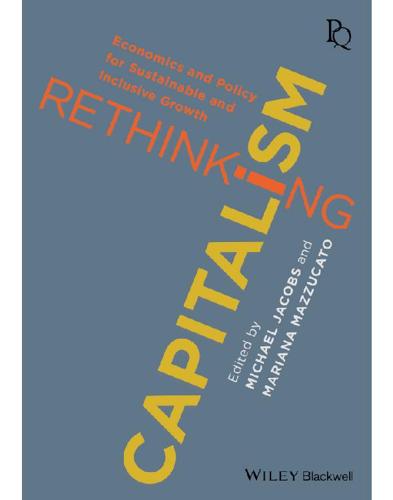
Rethinking Capitalism: Economics and Policy for Sustainable and Inclusive Growth
by
Michael Jacobs
and
Mariana Mazzucato
Published 31 Jul 2016

The Price of Time: The Real Story of Interest
by
Edward Chancellor
Published 15 Aug 2022
Moody’s estimated that, if properly accounted, the pensions deficits at 56 US public schemes would amount to a collective $1.7 trillion (Financial Times, 17 March 2015). 49. This was the case for the General Motors’ reorganization in early 2009, when pension entitlements of the UAW members took precedence over GM’s creditors – despite the creditors’ legal claims being superior. In Detroit’s 2013 bankruptcy, pensioners also fared better than bondholders (Darrell Preston, ‘Making U.S. Pensions Honest about Returns Means Bigger Deficits’, Bloomberg, 13 August 2015). New Jersey had 750,000 active and retired members in its three large state pension plans, and net pension liabilities of $58 billion.
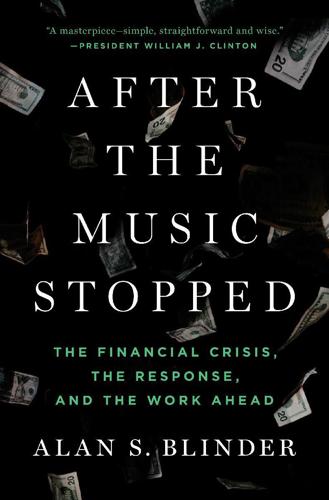
After the Music Stopped: The Financial Crisis, the Response, and the Work Ahead
by
Alan S. Blinder
Published 24 Jan 2013

The Meritocracy Trap: How America's Foundational Myth Feeds Inequality, Dismantles the Middle Class, and Devours the Elite
by
Daniel Markovits
Published 14 Sep 2019
still dominate the town: Anonymous residents in conversation with the author, St. Clair Shores, Michigan, May 3, 2018. the largest municipal bankruptcy: See Monica Davey and Mary Williams Walsh, “Billions in Debt, Detroit Tumbles into Insolvency,” New York Times, July 18, 2013, accessed June 23, 2018, www.nytimes.com/2013/07/19/us/detroit-files-for-bankruptcy.html. Fewer than a quarter: According to 2016 estimates, 24.4 percent of St. Clair Shores residents twenty-five years old or older have finished a bachelor’s degree compared to 30.0 percent nationally, and 8.3 percent have finished a graduate or professional degree compared to 11.5 percent nationally.

The Rise and Fall of American Growth: The U.S. Standard of Living Since the Civil War (The Princeton Economic History of the Western World)
by
Robert J. Gordon
Published 12 Jan 2016